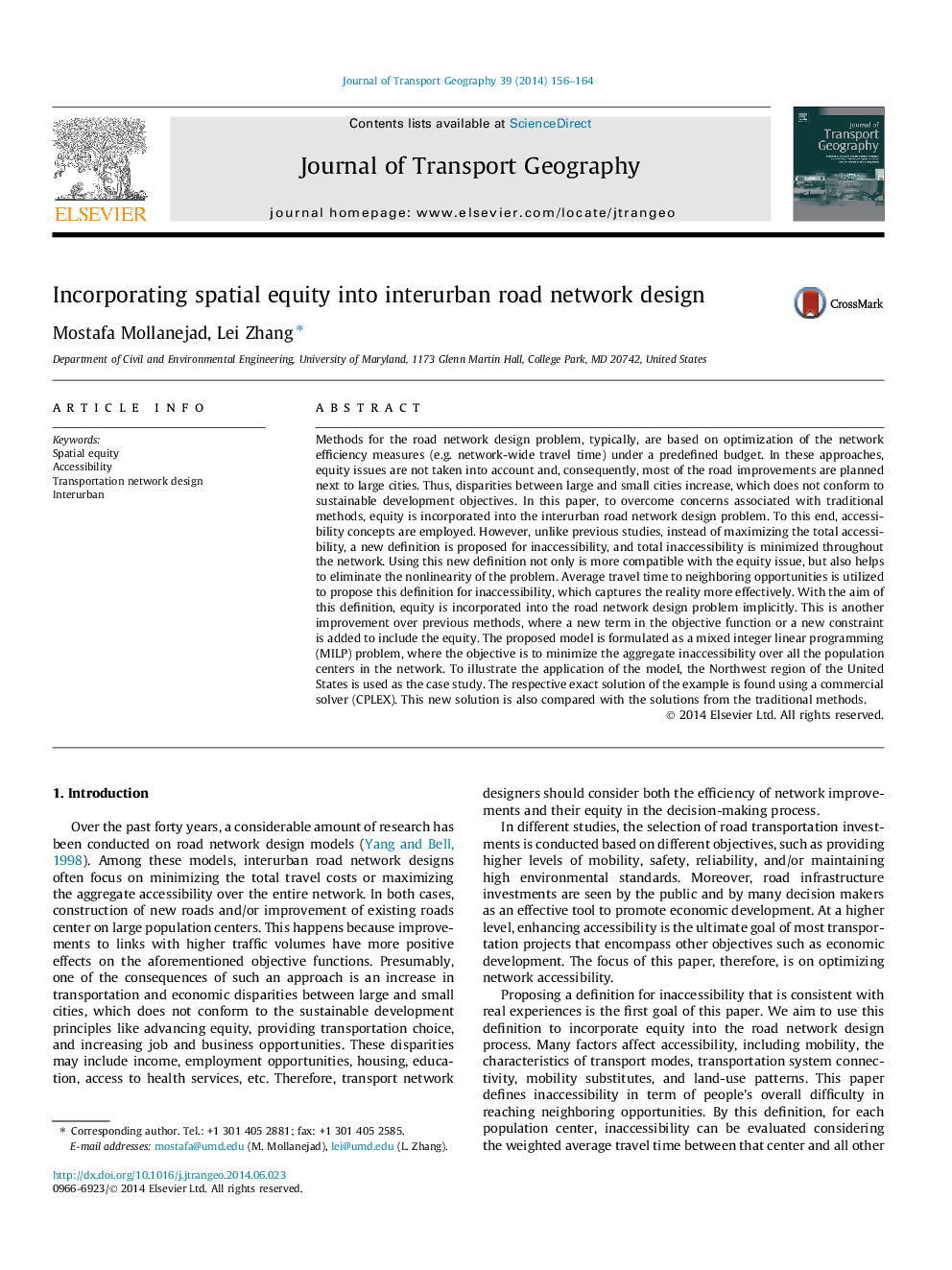| کد مقاله | کد نشریه | سال انتشار | مقاله انگلیسی | نسخه تمام متن |
|---|---|---|---|---|
| 1059205 | 1485428 | 2014 | 9 صفحه PDF | دانلود رایگان |
• An optimization model is proposed for interurban road network design problem.
• The proposed formulation aims to implicitly see the equity in the objective function.
• A new accessibility measure is used to assess equity better and reduce the complexity.
• The model provides a tradeoff between the total performance of the network and equity.
• The problem is solved for the U.S. Northwest region and compared to the conventional methods.
Methods for the road network design problem, typically, are based on optimization of the network efficiency measures (e.g. network-wide travel time) under a predefined budget. In these approaches, equity issues are not taken into account and, consequently, most of the road improvements are planned next to large cities. Thus, disparities between large and small cities increase, which does not conform to sustainable development objectives. In this paper, to overcome concerns associated with traditional methods, equity is incorporated into the interurban road network design problem. To this end, accessibility concepts are employed. However, unlike previous studies, instead of maximizing the total accessibility, a new definition is proposed for inaccessibility, and total inaccessibility is minimized throughout the network. Using this new definition not only is more compatible with the equity issue, but also helps to eliminate the nonlinearity of the problem. Average travel time to neighboring opportunities is utilized to propose this definition for inaccessibility, which captures the reality more effectively. With the aim of this definition, equity is incorporated into the road network design problem implicitly. This is another improvement over previous methods, where a new term in the objective function or a new constraint is added to include the equity. The proposed model is formulated as a mixed integer linear programming (MILP) problem, where the objective is to minimize the aggregate inaccessibility over all the population centers in the network. To illustrate the application of the model, the Northwest region of the United States is used as the case study. The respective exact solution of the example is found using a commercial solver (CPLEX). This new solution is also compared with the solutions from the traditional methods.
Journal: Journal of Transport Geography - Volume 39, July 2014, Pages 156–164
